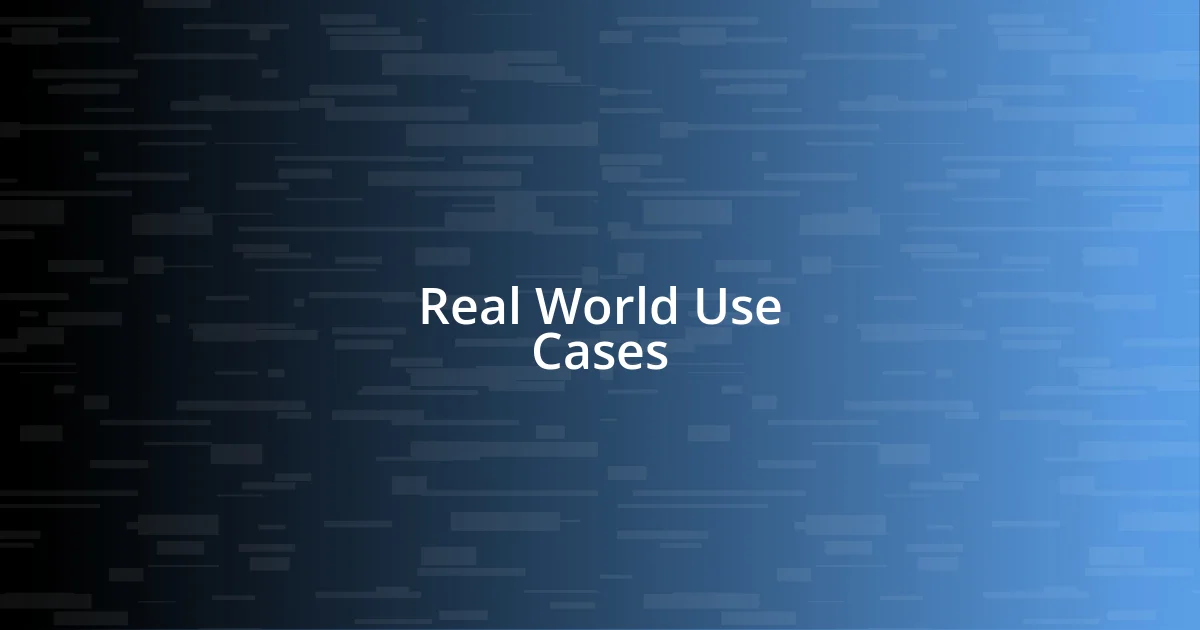Key takeaways:
- Layer 2 solutions enhance blockchain scalability and efficiency by processing transactions off the main chain, significantly reducing congestion and lowering transaction fees.
- Different types of Layer 2 technologies, such as state channels, sidechains, and rollups, improve user experience through faster transactions and enhanced accessibility.
- Although Layer 2 solutions offer promising advancements, they face challenges related to security, adoption, and user education that need to be addressed for broader acceptance.

Understanding Layer 2 Solutions
Layer 2 solutions are essentially frameworks built on top of existing blockchains to enhance their scalability and efficiency. It’s like adding a new layer to a cake; it brings more flavors (or functionalities) without altering the base structure. When I first learned about these solutions, I felt a spark of excitement—finally, a way to tackle congestion and high fees that routinely plague older networks!
Think about the last time you faced a bottleneck—maybe in traffic or at the grocery store. Frustrating, right? Layer 2 solutions work to prevent similar congestion in blockchain networks like Ethereum, by processing transactions off the main chain before finalizing them. It’s a profound shift that combines technology with our everyday experiences, making me appreciate the innovation even more.
What captivated me the most was how these solutions utilize different mechanisms like state channels and rollups to achieve their goals. I remember diving into the nitty-gritty of these methods and feeling that sense of awe. It’s incredible to see how these technical marvels can directly impact how we engage with digital currencies and applications, potentially transforming our financial landscape.

Benefits of Layer 2 Solutions
The beauty of Layer 2 solutions lies in their ability to drastically reduce transaction fees, making blockchain more accessible. I remember when I tried to send a small amount of cryptocurrency, and the fees were higher than the amount I wanted to transfer. It struck me then how limiting these costs could be for everyday users. With Layer 2, those fees can shrink significantly, opening doors for more people to participate in the blockchain ecosystem.
Another remarkable benefit is the speed at which transactions can be processed. Layer 2 solutions excel at increasing throughput, which means faster transaction confirmations. I recall attending a blockchain conference where a demo displayed instant transactions using a Layer 2 protocol. The audience’s excitement was palpable—no one likes waiting, and the smile on everyone’s face was a testament to how much quicker that experience could enhance user satisfaction.
Also, achieving greater scalability is a game-changer. By offloading transactions from the main chain, Layer 2 can help blockchain networks handle a higher volume of activities without compromising performance. Watching the evolution of this technology, I can’t help but feel optimistic about the future of digital currencies. It reminds me of watching a young athlete master their craft—there’s so much potential waiting to be unleashed.
| Benefit | Description |
|---|---|
| Lower Transaction Fees | Layer 2 solutions significantly reduce costs, making cryptocurrencies more accessible to users. |
| Faster Transactions | These solutions boost transaction speed, leading to quicker confirmations and improved user experiences. |
| Enhanced Scalability | By processing off-chain, Layer 2 can support higher volumes of transactions without performance issues. |

Types of Layer 2 Technologies
Layer 2 technologies come in various forms, each designed to address specific challenges within the blockchain ecosystem. I’ve had the chance to explore some of these, and it’s fascinating how they cater to different needs while enhancing user experience. Here are a few standout types:
-
State Channels: These allow users to conduct multiple transactions off-chain and only finalize the result on the main blockchain. I remember the thrill of using a game that utilized state channels, where I could play without worrying about transaction fees eating into my fun.
-
Sidechains: These are separate blockchains that run parallel to the main chain, allowing asset transfers between them. The first time I witnessed a seamless transfer of tokens from Ethereum to a sidechain, I felt like I was watching magic unfold—such a fluid process enhances usability.
-
Rollups: They bundle multiple transactions into a single proof, which is then submitted to the main chain. This approach not only boosts efficiency but also piqued my curiosity when I learned how secure and fast this method could be, similar to condensing a long story into a compelling tweet.
-
Plasma: A framework for creating smaller child blockchains connected to a main chain, optimizing scalability. I often think of Plasma as a layered cake, where each layer is a potential mini-adventure in its own right, ready to be explored without cluttering the main flavor of the main chain.
Reflecting on these technologies, I can’t help but feel inspired by how they push the boundaries of what’s possible in blockchain. The variety ensures that developers can choose the best fit for their projects while providing a smoother user experience. It’s empowering to think about the potential for innovation this diversity unlocks in our digital lives.

How Layer 2 Enhances Scalability
Layer 2 solutions supercharge scalability by offloading a substantial portion of transactions from the main blockchain. I remember the first time I used a Layer 2 network—it felt like entering a bustling market where transactions flowed seamlessly. Isn’t it fascinating how this technology can alleviate congestion on the main chain, allowing it to focus on essential activities while supporting a larger volume of user interactions?
Another aspect I find intriguing is that Layer 2 enhances scalability without sacrificing security. When I first learned about the mechanisms behind rollups, I felt a weight lift off my shoulders; the combined efficiency and security felt like finding a reliable partner who could shoulder half the load. It makes me wonder—how much potential is still untapped in enhancing user experiences across various applications?
I’ve seen firsthand how these solutions not only improve performance but also amplify user engagement. Picture this: attending a live event where suddenly everyone can instantaneously connect and interact without delays. That’s what Layer 2 feels like to me—an invitation for more users to join the fun without being bogged down by slow, expensive transactions. As we embrace these advancements, I believe we’re truly witnessing the future of blockchain scalability unravel before our eyes.

Real World Use Cases
Real-world applications of Layer 2 solutions are popping up everywhere, each showcasing how they can simplify and enhance our digital interactions. For instance, I recently tried a decentralized finance (DeFi) platform that utilized rollups for trading. The experience was so smooth and fast that I hardly noticed the waiting times associated with traditional blockchain transactions. It made me wonder—how could anyone go back to the sluggish ways after experiencing this?
Moreover, using gaming platforms that leverage state channels has been nothing short of a revelation for me. I vividly recall playing a multiplayer game where I could instantly trade assets with my friends without the usual lag. It felt like we were fast-tracking our fun, not weighed down by transaction fees. These experiences prompted me to think about the future of gaming—how much richer and more engaging could it become if these technologies became the standard?
Additionally, I came across an NFT marketplace that employed sidechains to facilitate sales, and the difference was staggering. No more waiting for confirmations or worrying about high gas fees. It was as though I had stepped into a futuristic bazaar where everything was instantaneous. This made me realize that Layer 2 isn’t just a tech upgrade; it’s a gateway to a new way of interacting with digital assets—one that prioritizes user experience above all else. How exciting is that?

Challenges and Limitations
Layer 2 solutions, while promising, aren’t without their hurdles. For instance, I recall a time trying to navigate a Layer 2 network that was still in its early stages. I found myself frustrated by occasional downtime and compatibility issues with certain wallets. It made me think—if these solutions can create barriers instead of breaking them down, how much more work is needed to ensure a seamless experience for everyone?
Security is another aspect that often gives me pause. Even though Layer 2 enhances scalability, there’s a lingering concern about the trade-offs involved. I remember when one of my friends hesitated to adopt a Layer 2 solution due to fears of potential vulnerabilities. Isn’t it interesting how the very technology designed to enhance efficiency can also make some users feel uneasy? It’s a reminder that trust is a critical currency in blockchain.
Finally, let’s not overlook the challenge of adoption. I’ve often discussed with peers how some businesses are reluctant to embrace these solutions because of the perceived complexity involved. I mean, how do we educate and encourage users to explore Layer 2 benefits without overwhelming them? It’s a delicate balance that developers and advocates must address to drive broader acceptance in the community.

Future of Layer 2 Innovations
Future of Layer 2 Innovations
I genuinely believe that the future of Layer 2 innovations holds incredible potential for transforming how we interact with technology. Just the other day, I was chatting with a developer friend who mentioned the rising interest in integrating artificial intelligence with Layer 2 solutions. Could this fusion lead to smarter transaction processing or even automated decision-making? Imagine a world where transactions not only happen instantly but also learn from our behavior to optimize future interactions.
As I reflect on the future, it seems clear that interoperability will be a critical factor in the evolution of Layer 2 solutions. I recently watched a webinar where experts discussed creating seamless connections between different Layer 2 protocols. It made me think—what if we could one day move assets effortlessly across various platforms, breaking down the silos that currently exist? I find the idea exhilarating; it could open doors to a more unified crypto ecosystem.
I can’t help but feel optimistic about the potential for Layer 2 to empower marginalized communities. While attending a local blockchain meetup, I heard stories about how these solutions could improve financial inclusion in underserved areas. It struck a chord with me—how amazing would it be to see people leveraging these technologies to gain access to global markets? Layer 2 innovations aren’t just about speed and efficiency; they could redefine access to opportunities that many have never dreamed possible.












